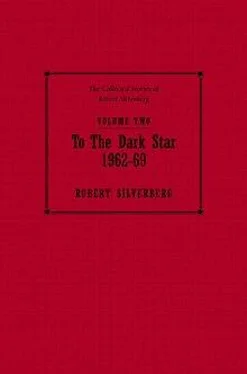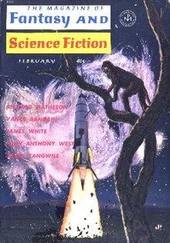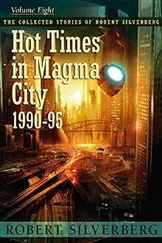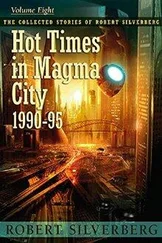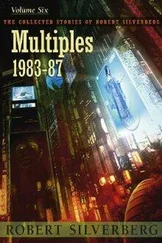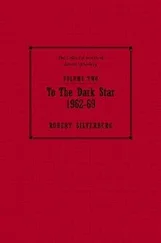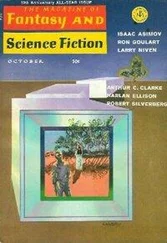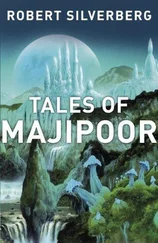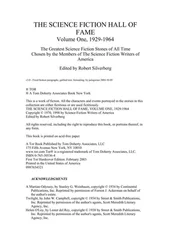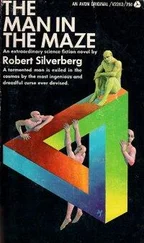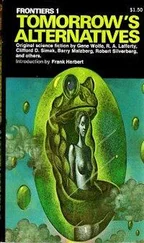Robert Silverberg - To the Dark Star
Здесь есть возможность читать онлайн «Robert Silverberg - To the Dark Star» весь текст электронной книги совершенно бесплатно (целиком полную версию без сокращений). В некоторых случаях можно слушать аудио, скачать через торрент в формате fb2 и присутствует краткое содержание. Год выпуска: 2007, ISBN: 2007, Издательство: Subterranean Press, Жанр: Фантастика и фэнтези, на английском языке. Описание произведения, (предисловие) а так же отзывы посетителей доступны на портале библиотеки ЛибКат.
- Название:To the Dark Star
- Автор:
- Издательство:Subterranean Press
- Жанр:
- Год:2007
- ISBN:978-1-59606-089-0
- Рейтинг книги:3 / 5. Голосов: 1
-
Избранное:Добавить в избранное
- Отзывы:
-
Ваша оценка:
- 60
- 1
- 2
- 3
- 4
- 5
To the Dark Star: краткое содержание, описание и аннотация
Предлагаем к чтению аннотацию, описание, краткое содержание или предисловие (зависит от того, что написал сам автор книги «To the Dark Star»). Если вы не нашли необходимую информацию о книге — напишите в комментариях, мы постараемся отыскать её.
To the Dark Star — читать онлайн бесплатно полную книгу (весь текст) целиком
Ниже представлен текст книги, разбитый по страницам. Система сохранения места последней прочитанной страницы, позволяет с удобством читать онлайн бесплатно книгу «To the Dark Star», без необходимости каждый раз заново искать на чём Вы остановились. Поставьте закладку, и сможете в любой момент перейти на страницу, на которой закончили чтение.
Интервал:
Закладка:
To the Dark Star
by Robert Silverberg
We came to the dark star, the microcephalon and the adapted girl and I, and our struggle began. A poorly assorted lot we were, to begin with. The microcephalon hailed from Quendar IV, where they grow people with greasy gray skins, looming shoulders, and virtually no heads at all. He—it—was wholly alien, at least. The girl was not, and so I hated her.
She came from a world in the Procyon system, where the air was more or less Earth-type, but the gravity was double ours. There were other differences, too. She was thick through the shoulders, thick through the waist, a block of flesh. The genetic surgeons had begun with human raw material, but they had transformed it into something nearly as alien as the microcephalon. Nearly.
We were a scientific team, so they said. Sent out to observe the last moments of a dying star. A great interstellar effort. Pick three specialists at random, put them in a ship, hurl them halfway across the universe to observe what man had never observed before. A fine idea. Noble. Inspiring. We knew our subject well. We were ideal.
But we felt no urge to cooperate, because we hated one another.
The adapted girl—Miranda—was at the controls the day that the dark star actually came into sight. She spent hours studying it before she deigned to let us know that we were at our destination. Then she buzzed us out of our quarters.
I entered the scanning room. Miranda’s muscular bulk overflowed the glossy chair before the main screen. The microcephalon stood beside her, a squat figure on a tripodlike arrangement of bony legs, the great shoulders hunched and virtually concealing the tiny cupola of the head. There was no real reason why any organism’s brain had to be in its skull, and not safely tucked away in the thorax; but I had never grown accustomed to the sight of the creature. I fear I have little tolerance for aliens.
“Look,” Miranda said, and the screen glowed.
The dark star hung in dead center, at a distance of perhaps eight light-days—as close as we dared to come. It was not quite dead, and not quite dark. I stared in awe. It was a huge thing, some four solar masses, the imposing remnant of a gigantic star. On the screen there glowed what looked like an enormous lava field. Islands of ash and slag the size of worlds drifted in a sea of molten and glowing magma. A dull red illumination burnished the screen. Black against crimson, the ruined star still throbbed with ancient power. In the depths of that monstrous slagheap compressed nuclei groaned and gasped. Once the radiance of this star had lit a solar system; but I did not dare think of the billions of years that had passed since then, nor of the possible civilizations that had hailed the source of light and warmth before the catastrophe.
Miranda said, “I’ve picked up the thermals already. The surface temperature averages about nine hundred degrees. There’s no chance of landing.”
I scowled at her. “What good is the average temperature? Get a specific. One of those islands—”
“The ash masses are radiating at two hundred and fifty degrees. The interstices go from one thousand degrees on up. Everything works out to a mean of nine hundred degrees, and you’d melt in an instant if you went down there. You’re welcome to go, brother. With my blessing.”
“I didn’t say—”
“You implied that there’d be a safe place to land on that fireball,” Miranda snapped. Her voice was a basso boom; there was plenty of resonance space in that vast chest of hers. “You snidely cast doubt on my ability to—”
“We will use the crawler to make our inspection,” said the microcephalon in its reasonable way. “There never was any plan to make a physical landing on the star.”
Miranda subsided. I stared in awe at the sight that filled our screen.
A star takes a long time to die, and the relict I viewed impressed me with its colossal age. It had blazed for billions of years, until the hydrogen that was its fuel had at last been exhausted, and its thermonuclear furnace started to splutter and go out. A star has defenses against growing cold; as its fuel supply dwindles, it begins to contract, raising its density and converting gravitational potential energy into thermal energy. It takes on new life; now a white dwarf, with a density of tons per cubic inch, it burns in a stable way until at last it grows dark.
We have studied white dwarfs for centuries, and we know their secrets—so we think. A cup of matter from a white dwarf now orbits the observatory on Pluto for our further illumination.
But the star on our screen was different.
It had once been a large star—greater than the Chandrasekhar limit, 1.2 solar masses. Thus it was not content to shrink step by step to the status of a white dwarf. The stellar core grew so dense that catastrophe came before stability; when it had converted all its hydrogen to iron-56, it fell into catastrophic collapse and went supernova. A shock wave ran through the core, converting the kinetic energy of collapse into heat. Neutrinos spewed outward; the envelope of the star reached temperatures upwards of 200 billion degrees; thermal energy became intense radiation, streaming away from the agonized star and shedding the luminosity of a galaxy for a brief, fitful moment.
What we beheld now was the core left behind by the supernova explosion. Even after that awesome fury, what was intact was of great mass. The shattered hulk had been cooling for eons, cooling toward the final death. For a small star, that death would be the simple death of coldness: the ultimate burnout, the black dwarf drifting through the void like a hideous mound of ash, lightless, without warmth. But this, our stellar core, was still beyond the Chandrasekhar limit. A special death was reserved for it, a weird and improbable death.
And that was why we had come to watch it perish, the microcephalon and the adapted girl and I.
I parked our small vessel in an orbit that gave the dark star plenty of room. Miranda busied herself with her measurements and computations. The microcephalon had more abstruse things to do. The work was well divided; we each had our chore. The expense of sending a ship so great a distance had necessarily limited the size of the expedition. Three of us: a representative of the basic human stock, a representative of the adapted colonists, a representative of the race of microcephalons, the Quendar people, the only other intelligent beings in the known universe.
Three dedicated scientists. And therefore three who would live in serene harmony during the course of the work, since as everyone knows scientists have no emotions and think only of their professional mysteries. As everyone knows.
I said to Miranda, “Where are the figures for radial oscillation?”
She replied, “See my report. It’ll be published early next year in—”
“Damn you, are you doing that deliberately? I need those figures now!”
“Give me your totals on the mass-density curve, then.”
“They aren’t ready. All I’ve got is raw data.”
“That’s a lie! The computer’s been running for days! I’ve seen it,” she boomed at me.
I was ready to leap at her throat. It would have been a mighty battle; her 300-pound body was not trained for personal combat as mine was, but she had all the advantages of strength and size. Could I club her in some vital place before she broke me in half? I weighed my options.
Then the microcephalon appeared and made peace once more with a few feather-soft words.
Only the alien among us seemed to conform at all to the stereotype of that emotionless abstraction, “the scientist.” It was not true, of course; for all we could tell, the microcephalon seethed with jealousies and lusts and angers, but we had no clue to their outward manifestation. Its voice was flat as a vocoder transmission. The creature moved peacefully among us, the mediator between Miranda and me. I despised it for its mask of tranquility. I suspected, too, that the microcephalon loathed the two of us for our willingness to vent our emotions, and took a sadistic pleasure from asserting superiority by calming us.
Читать дальшеИнтервал:
Закладка:
Похожие книги на «To the Dark Star»
Представляем Вашему вниманию похожие книги на «To the Dark Star» списком для выбора. Мы отобрали схожую по названию и смыслу литературу в надежде предоставить читателям больше вариантов отыскать новые, интересные, ещё непрочитанные произведения.
Обсуждение, отзывы о книге «To the Dark Star» и просто собственные мнения читателей. Оставьте ваши комментарии, напишите, что Вы думаете о произведении, его смысле или главных героях. Укажите что конкретно понравилось, а что нет, и почему Вы так считаете.
